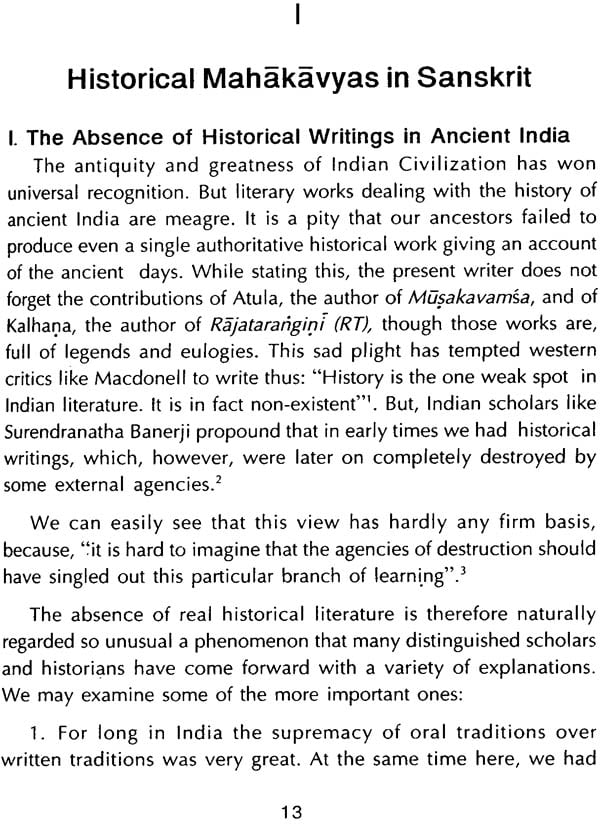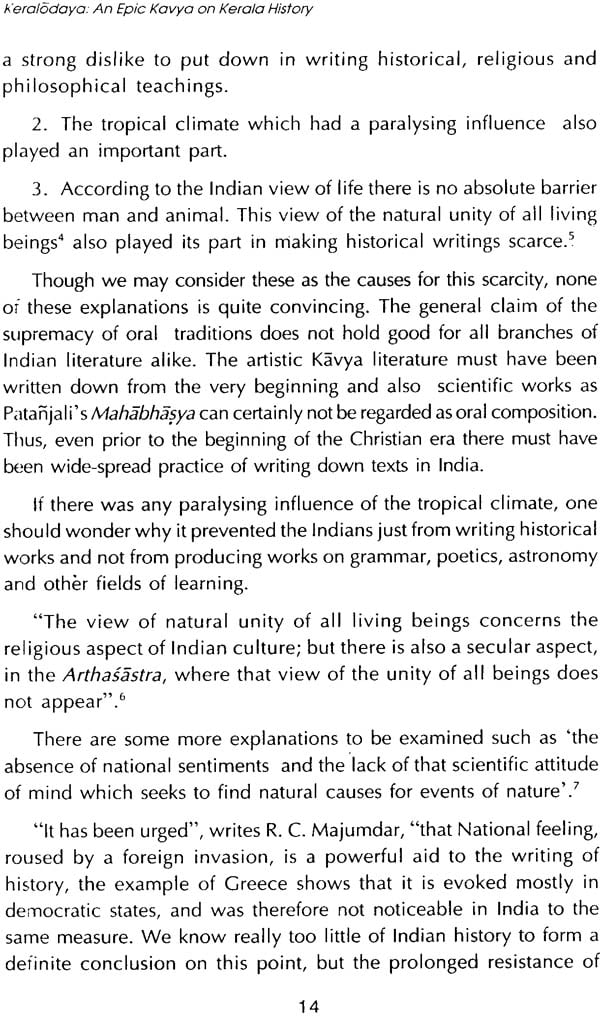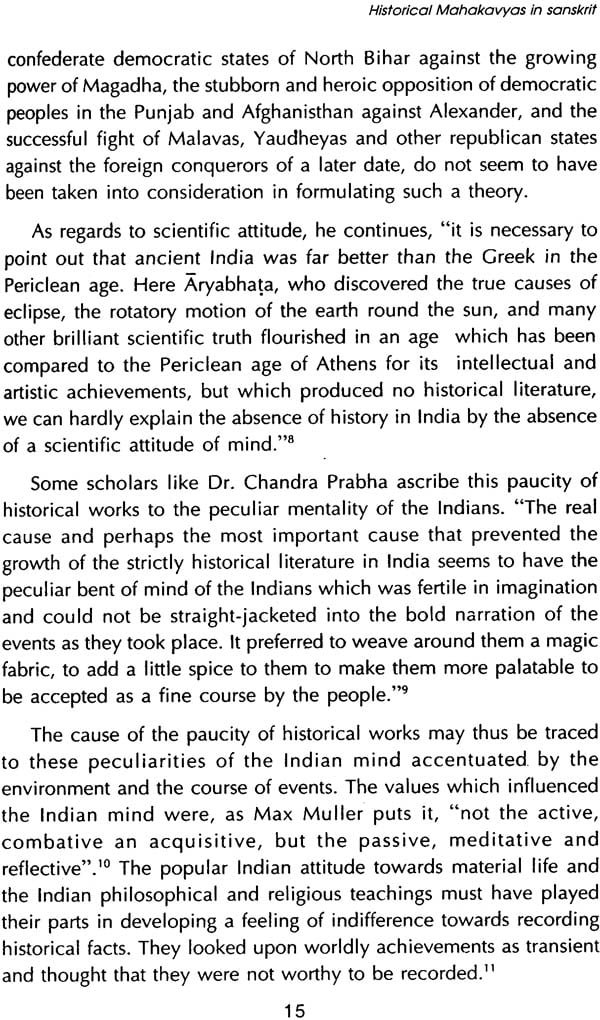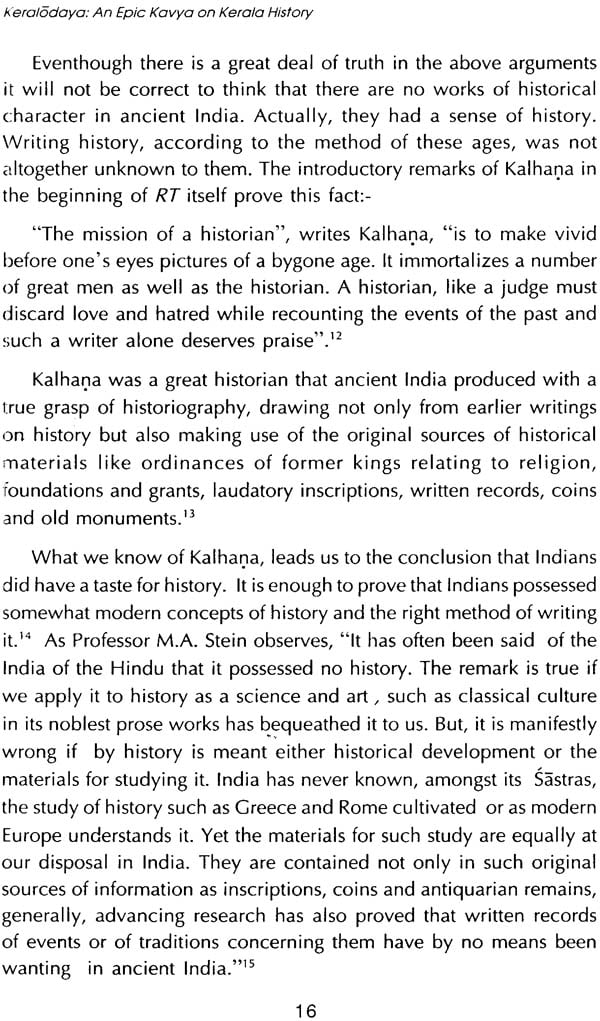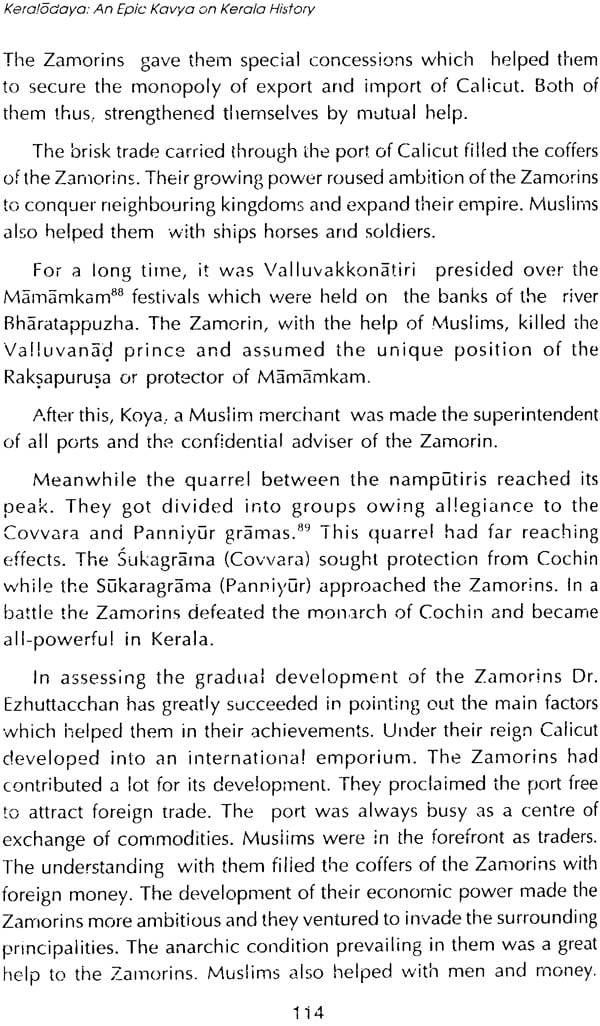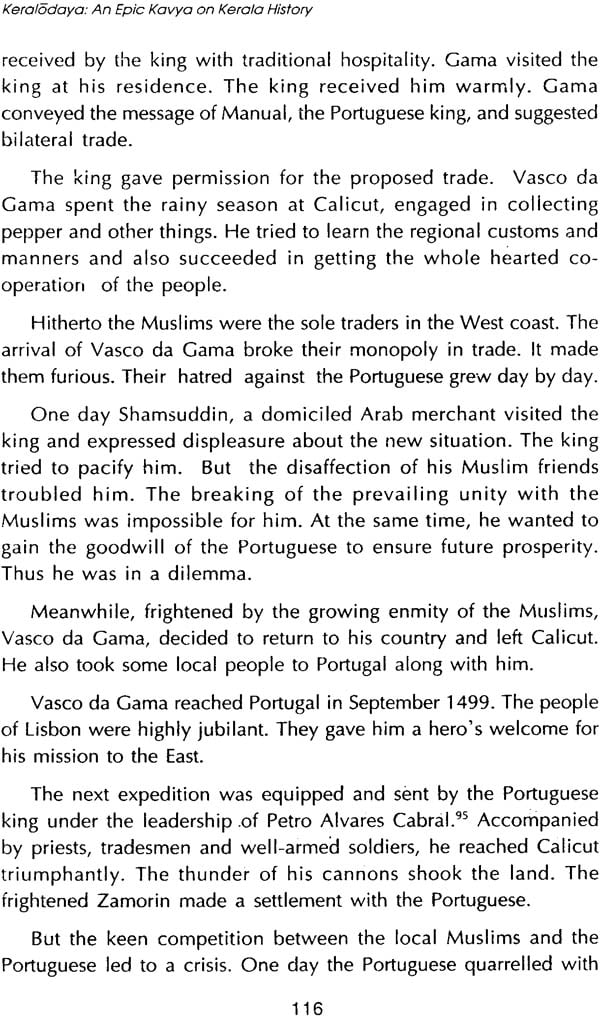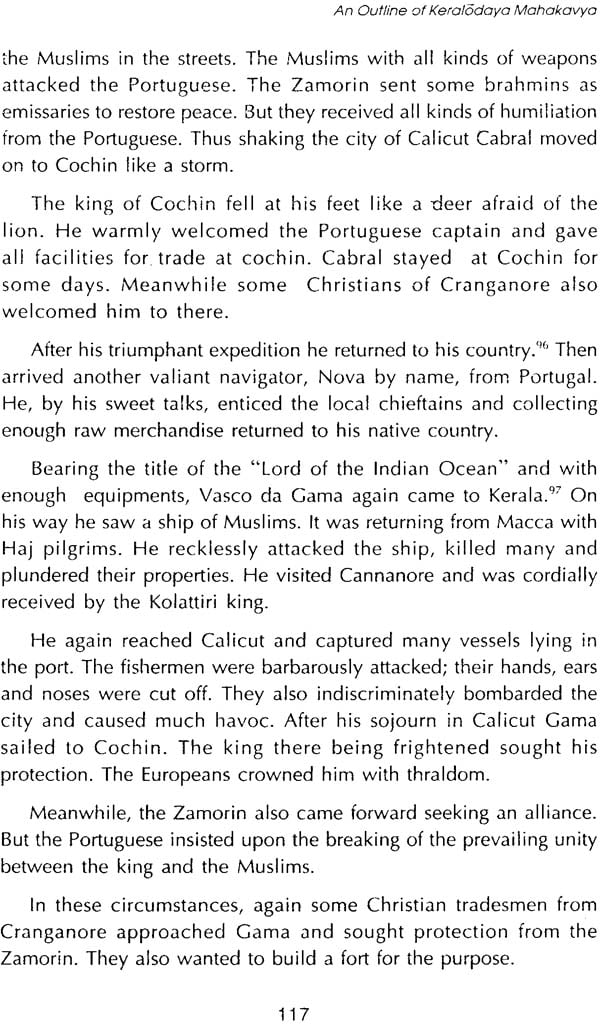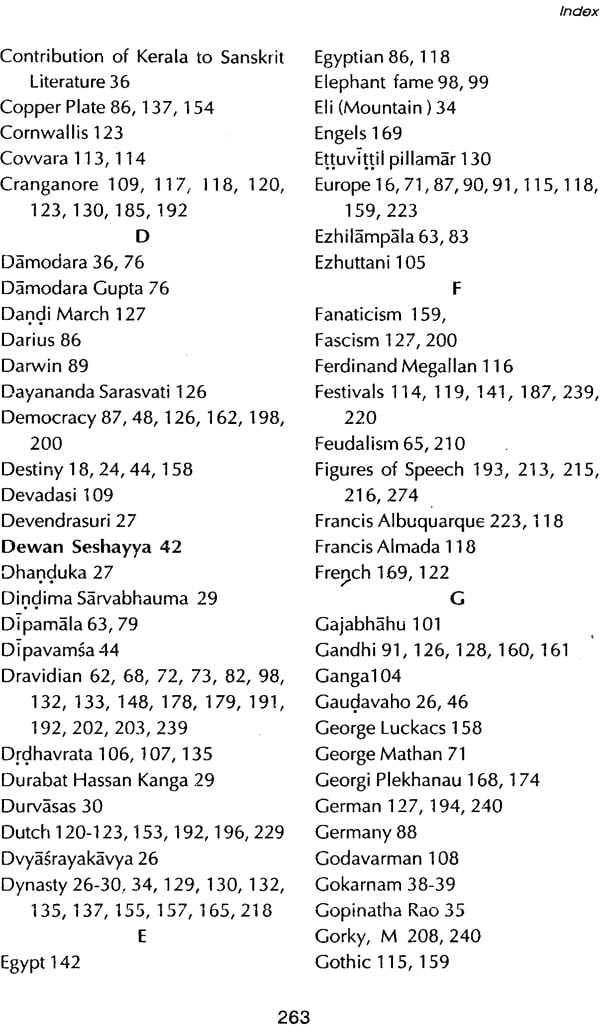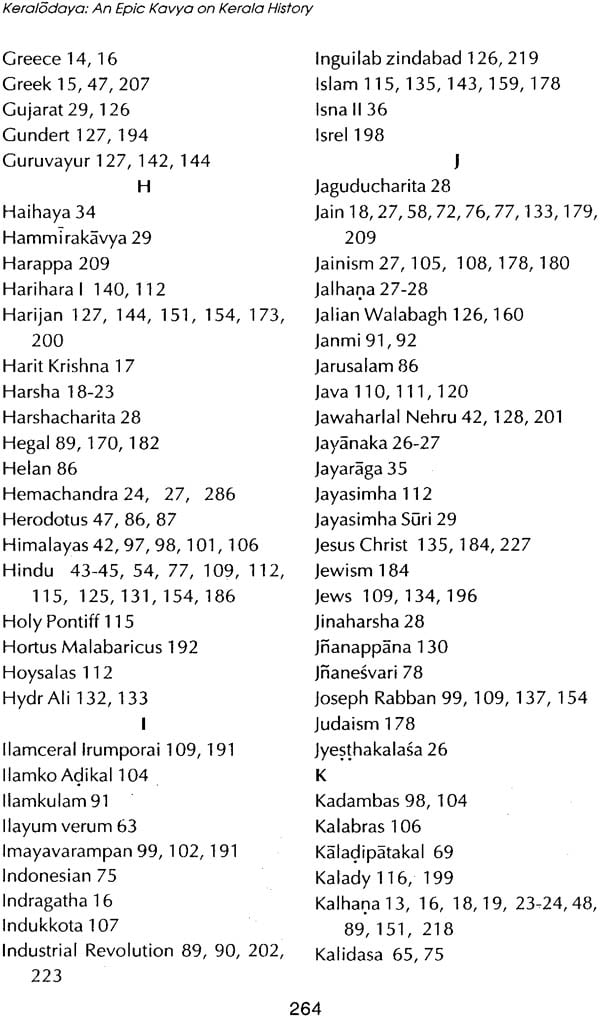
Keralodaya (An Epic Kavya on Kerala History)
Book Specification
| Item Code: | NAH459 |
| Author: | Dr. Dharmaraj Adat |
| Publisher: | Publication Division University of |
| Language: | English |
| Edition: | 2007 |
| ISBN: | 8177480561 |
| Pages: | 270 |
| Cover: | Paperback |
| Other Details | 8.5 inch x 5.5 inch |
| Weight | 280 gm |
Book Description
I am extremely happy to publish Keralodaya- an Epic Kavya on Kerala History by Dr. Dharmaraj Adat, Reader in Sahitya, Sree Sankaracharya University of Sanskrit, as the eighteenth book in the Calicut University Sanskrit Series.
This book is the revised and updated form of Dr. Dharmaraj's Ph.D. Thesis, which was prepared under my supervision.
Dr. K. N. Ezhuthacchan (1911 - 1981) was one of the leading lights of progressive writers of Kerala. He began his carrier as a School teacher. Then, by private study, he attained B.A; M.A; and Ph.D. in more than one subject. He was a great Malayalam - Sanskrit scholar and well - versed in English, Tamil, Kannada, Telugu, Hindi and many other Indian and foreign languages, Research, criticism, composing poems in Malayalam and Sanskrit, teaching - in all these fields, he earnestly engaged and achieved a lot. In theory and practice he was an ardent Marxist - Leninist throughout his life.
Though Dr. K. N. Ezhuthacchan has a good deal of works in Malayalam, English and Sanskrit to his credit, Keralodaya, the Sanskrit historical Mahakavya, can be considered as his Magnum Opus. Of course, a few studies have been come out on Dr. Ezhuthacchan and his works. But, a comprehensive study from the point of view of research has not been made so far. Dr. Dharmaraj Adat has come forward to take up the task and successfully completed the same within a comparatively short period. The present book is the pleasant result of his sincere endeavour.
With a view to give a broad background to the study of Keralodaya, Dr. Dharmaraj has devoted the first chapter of his book for a general study of historical Kavyas in Sanskrit all over India and Kerala in particular. The study of Kalhana's Rajatarangini can be assessed as rather comprehensive. An average student of History and Sanskrit may gain a lot of Knowledge from this chapter.
A life - sketch and survey of works of Dr. K. N. Ezhuthacchan can be seen in the second chapter. Many of the readers may wonder going through the life history of that self made man and the multifaceted Iiterary contributions of that all - rounder.
Chapter III discusses the concept history of Dr. Ezhuthacchan. As Dr. Dharmaraj rightly points out, "even though he (Dr. Ezhuthacchan) used almost every concept of history in interpreting Kerala's history from mythology to the modern period, he considers the people as the main and leading forces of history. He focuses attention mainly on social changes and modes of social life. Thus, it is man who makes history in Keralodaya. Here historical figures and well Known heroes appear on the scene whenever their presence is necessitated and disappear after playing their part in such climacteric situations."
Even those who are very much interested in Kerala history are not in a position to understand what Dr. K. N. Ezhuthacchan has written in Keralodaya, merely because of its language, namely, Sanskrit. Since there is a translation of the work in malayalam Malayalee readers can study it. In the original Sanskrit version, although there are some footnotes in English, they are not enough to provide a non - Sanskrit man with a comprehensive understanding of the content of the poem. In this circumstance, it is very appropriate to give an outline of the work in a study like this. Chapter IV is exclusively devoted for this purpose.
In the next chapter, the author makes an assessment of Keralodaya as a historical poem. Concluding statement of the chapter may be quoted: "It is the emphasis upon the portrayal of the life and struggles of the masses who are the driving forces of history as well as the interesting scenes and situations of every day life that makes Keralodaya a genuinely realistic historical Mahakavya."
The role of individual in history and historical kavyas - this is the topic dealt within the next chapter Dr. Dharmaraj establishes here that "by the depiction of popular masses as the leading and determining forces of history, Keralodaya occupies a high position in comparison with other historical Mahakavyas."
The seventh chapter presents the picture of cultural history of Kerala as gathered from the Kavya. Here we have many clear - cut conclusions like that (i) in Keralodaya the poet gives a beautiful picture of the gradual development of the Aryanisation of Kerala; (ii) through the introduction of Sankara's philosophical speech, the poet points out the fact that every philosophy should inevitably strive towards the well being of the whole world; and (iii) the poet's attempt 'to present on a broad canvas the cultural, political and social history of Kerala with a national and international background' is a great success.
In the eighth chapter an appreciation of the poetic merits of Keralodaya is attempted. The following conclusions made by the author are noteworthy; "it (Keralodaya) also reveals the wonderful potentialities that classical Sanskrit has, as a vehicle of modern poetry with a serious purpose and governed by a modern outlook and progressive ideas. Kerala history, which is unfolded through the medium of Sanskrit language, that has already attained the status of a national and international scholar's language, thus gets its entrance into international cultural history." (p.259). "Awakening the past through glowing images is the main achievement of this Kavya. It is not done to revive the ghosts of the past in new guise, but to enable the modern man of Kerala to make a real assessment of this past and to impress upon the reader the necessity for unity, It projects the secular aspects of the past in new guise, but to enable the modern man of Kerala to make a real assessment of his past and to impress upon the reader the necessity for unity it projects the secular aspects of the life of ancient Keralites, assimilating the best things of it. Moreover, it highlights the concepts of patriotism and national integration. "Thus, Keralodaya conveys the message of those values which are becoming rare in present India."
Chapter IX offers a few concluding remarks.
I hope that this excellent study will be warmly welcomed by those who are interested in history in general and Kerala history in particular.
| Introduction | 9 | |
| 1 | Historical Mahakavyas in Sanskrit | 13 |
| 2 | Dr. K. N. Ezhuttacchan- His life and Works | 61 |
| 3 | Dr. K. N. Ezhuttacchan's Concept of History | 85 |
| 4 | An Outline of Keralodaya Mahakavya | 93 |
| 5 | Keralodaya as a Historical Mahakavya | 146 |
| 6 | The Role of Individual in History and Historical Kavyas | 167 |
| 7 | The Cultural History of Kerala as Depicted in Keralodaya | 177 |
| 8 | Keralodaya - its Poetic Merits | 207 |
| 9 | Conclusion | 249 |
| Select Bibliography | 251 | |
| Index | 261 |
